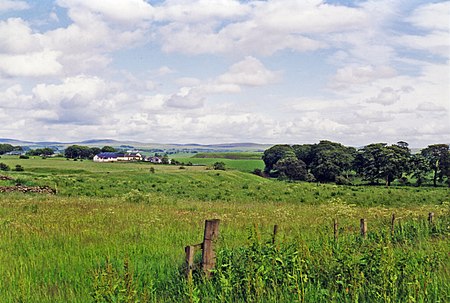Haywood railway station
Commons category link is locally definedDisused railway stations in South LanarkshirePages with no open date in Infobox stationRailway stations in Great Britain closed in 1951Railway stations in Great Britain opened in 1870 ... and 2 more
Transport in South LanarkshireUse British English from October 2019

Haywood railway station was the only intermediate station on the three and three quarter mile long Wilsontown Branch that ran from a bay platform at Auchengray railway station and served the mining village of Haywood and also Wilsontown at the passenger line terminus in Lanarkshire. Several collieries were also served via mineral lines.
Excerpt from the Wikipedia article Haywood railway station (License: CC BY-SA 3.0, Authors, Images).Haywood railway station
Tashieburn Road,
Geographical coordinates (GPS) Address External links Nearby Places Show on map
Geographical coordinates (GPS)
| Latitude | Longitude |
|---|---|
| N 55.7766 ° | E -3.6415 ° |
Address
Haywood
Tashieburn Road
ML11 8ES
Scotland, United Kingdom
Open on Google Maps







